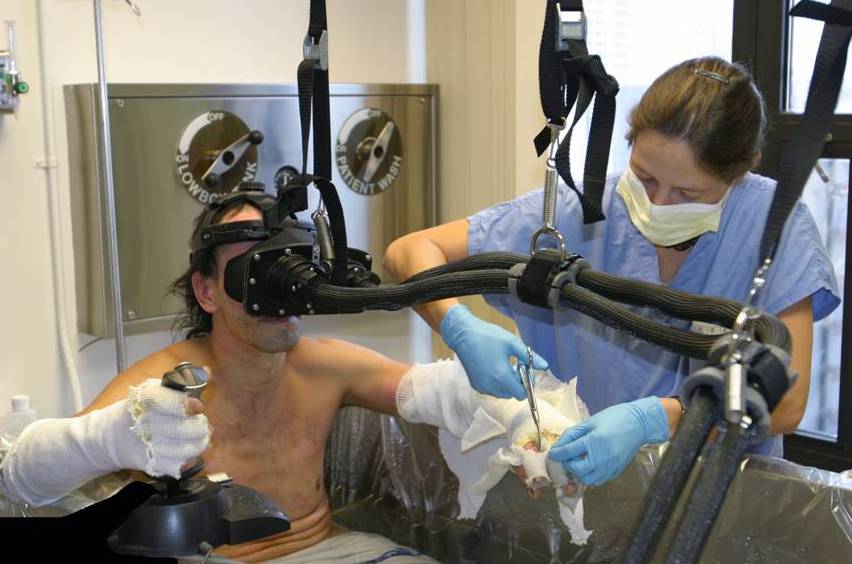High-Risk Jobs and Industries
Occupational exposure is the main way people come into contact with asbestos. Workers in certain jobs and industries are at a higher risk. These include:
- Construction Sites: Workers often disturb asbestos-containing materials.
- Shipyards: Asbestos was widely used in shipbuilding.
- Automotive Repair Shops: Mechanics may encounter asbestos in brake pads and clutches.
- Chemical Plants: Asbestos was used for its heat-resistant properties.
- Power Plants: Workers may be exposed to asbestos in insulation and machinery.
Regulations and Safety Measures
To reduce the risk of asbestos exposure, various regulations and safety measures have been put in place. Employers are required to:
- Provide protective gear to workers.
- Ensure proper ventilation in work areas.
- Conduct regular health screenings for employees.
- Educate workers about the dangers of asbestos.
Case Studies of Occupational Exposure
Many workers have been affected by asbestos exposure. For example, construction workers who handled asbestos materials often developed serious health issues. Similarly, shipyard workers were frequently exposed to asbestos, leading to diseases like mesothelioma. These case studies highlight the importance of safety measures and regulations in protecting workers.
Environmental and Secondary Asbestos Exposure
Living Near Contaminated Sites
People living near contaminated sites are at risk of asbestos exposure. These sites can include old factories, mines, and even natural deposits. When asbestos fibers become airborne, they can be inhaled by nearby residents, leading to serious health issues. Even short-term asbestos exposure can be harmful.
Secondary Exposure from Family Members
Secondary exposure, also known as indirect exposure, occurs when asbestos fibers are brought into the home by someone who works with asbestos. These fibers can cling to clothing, hair, and skin. Family members who come into contact with these fibers are at risk of developing asbestos-related diseases. This type of exposure was more common before regulations were put in place in the 1980s, but new cases still appear today.
Natural Disasters and Asbestos Release
Natural disasters like earthquakes, hurricanes, and fires can disturb asbestos-containing materials in buildings and the environment. When these materials are damaged, asbestos fibers can be released into the air, posing a risk to anyone nearby. It’s important to be aware of this risk and take precautions during and after such events.
Health Risks Associated with Asbestos Exposure
Asbestosis and Its Symptoms
Asbestosis is a serious lung condition caused by inhaling asbestos fibers. When these fibers get into the lungs, they can cause thickening and scarring, making it hard to breathe. Common symptoms include difficulty breathing, a persistent cough, and chest pain. In severe cases, asbestosis can be fatal.
Lung Cancer and Mesothelioma
Exposure to asbestos significantly increases the risk of developing lung cancer and mesothelioma. Mesothelioma is a rare but aggressive cancer that affects the lining of the lungs, abdomen, or heart. The risk of lung cancer is even higher for those who smoke. Symptoms of these cancers often appear many years after exposure and can include chest pain, shortness of breath, and unexplained weight loss.
Other Health Complications
Besides asbestosis and cancer, asbestos exposure can lead to other health issues. These include pleural disease, which involves changes in the membranes surrounding the lungs and fluid buildup in the chest cavity. These conditions can further increase the risk of lung cancer. Additionally, asbestos exposure has been linked to cancers of the throat, ovaries, stomach, and colon.
Factors Influencing Asbestos Risk
Duration and Intensity of Exposure
The duration of exposure to asbestos plays a significant role in determining the risk. Generally, the longer someone is exposed, the higher the risk. Similarly, the intensity of exposure, or how much asbestos a person is exposed to, also affects the risk level. For instance, workers who handle asbestos materials daily are at a higher risk compared to those with occasional exposure.
Type of Asbestos and Its Form
Not all asbestos types are equally dangerous. There are different forms of asbestos, and some are more harmful than others. For example, friable asbestos, which can be easily crumbled and released into the air, poses a higher risk than non-friable asbestos, which is more stable and less likely to become airborne.
Personal and Genetic Risk Factors
Individual factors also influence asbestos risk. Smoking is a significant personal risk factor that can increase the likelihood of developing asbestos-related diseases. Additionally, genetic factors, such as mutations in the BAP1 gene, can make some people more susceptible to the harmful effects of asbestos exposure.
Preventing and Managing Asbestos Exposure
Identifying Asbestos in Your Environment
Many homes, schools, and buildings built before the 1970s contain materials like pipes and floor tiles with asbestos. Generally, there’s no risk if the asbestos is enclosed and undisturbed. However, if these materials are damaged, asbestos fibers can be released into the air. Always have asbestos products inspected and repaired or removed by trained and accredited asbestos professionals.
Safety Protocols for Handling Asbestos
Professionals undergo in-depth training and certification to learn how to prevent asbestos exposure. They wear a respirator with a high-efficiency particulate air (HEPA) filter, disposable coveralls, goggles, and gloves during asbestos work. They also properly seal off the work area with plastic sheets and build a decontamination area. After removal, they clean the work area with a vacuum cleaner fitted with a HEPA filter. They also dispose of asbestos waste in specialized and clearly labeled bags at a landfill that can accept asbestos.
Medical Monitoring and Early Detection
Reducing exposure to asbestos is the best prevention against asbestosis. In the United States, federal law requires employers in industries that work with asbestos products—such as construction—to take special safety measures. Regular medical check-ups and early detection can help manage health risks associated with asbestos exposure. If you suspect you’ve been exposed, consult a healthcare provider for appropriate screening and monitoring.
Regulations and Legal Aspects of Asbestos Use
Historical Context and Bans
Asbestos has been used for many years, especially during and after World War II. It was common in building materials, shipbuilding, and even car parts. However, when people learned about the health risks in the 1970s, rules were made to protect workers. In 2024, the U.S. banned the import of chrysotile asbestos, the only type still used. Industries have up to 12 years to stop using it.
Current Regulations and Compliance
Today, there are many rules to keep people safe from asbestos. These rules cover how to use, handle, and get rid of asbestos. They also include testing and cleaning up areas with asbestos. Agencies like the Environmental Protection Agency (EPA) and the Occupational Safety and Health Administration (OSHA) make sure these rules are followed.
Legal Recourse for Asbestos Exposure
People who get sick from asbestos can take legal action. They can sue companies that exposed them to asbestos. There are lawyers who specialize in these cases. Winning a case can help pay for medical bills and other costs via asbestos claims payouts. Some laws also help protect workers and make sure companies follow safety rules.




